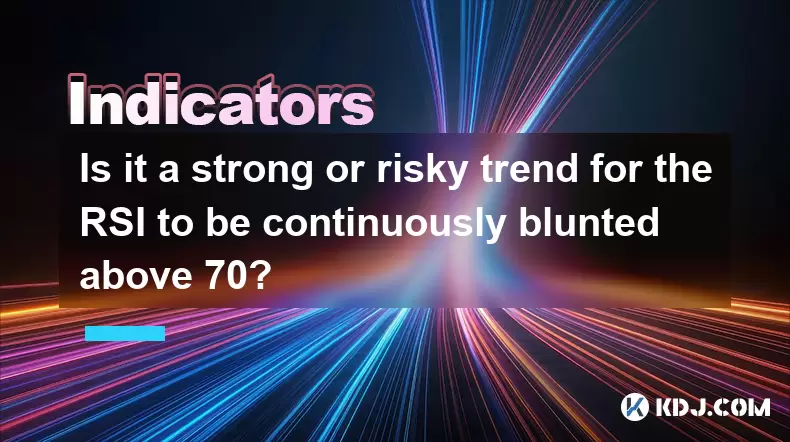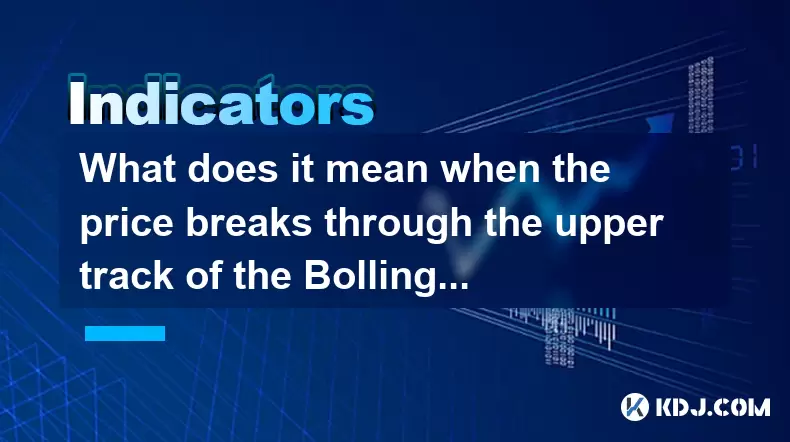-
 Bitcoin
Bitcoin $117500
-0.66% -
 Ethereum
Ethereum $3760
-1.24% -
 XRP
XRP $3.087
-2.54% -
 Tether USDt
Tether USDt $0.9999
-0.01% -
 BNB
BNB $803.6
-4.03% -
 Solana
Solana $180.3
-4.15% -
 USDC
USDC $0.9998
-0.01% -
 Dogecoin
Dogecoin $0.2218
-4.92% -
 TRON
TRON $0.3366
3.71% -
 Cardano
Cardano $0.7785
-3.73% -
 Hyperliquid
Hyperliquid $42.90
-4.75% -
 Sui
Sui $3.797
-7.45% -
 Stellar
Stellar $0.4165
-2.32% -
 Chainlink
Chainlink $17.65
-4.17% -
 Bitcoin Cash
Bitcoin Cash $561.0
-3.86% -
 Hedera
Hedera $0.2611
-4.54% -
 Avalanche
Avalanche $24.33
-7.02% -
 UNUS SED LEO
UNUS SED LEO $8.972
0.06% -
 Litecoin
Litecoin $107.6
-2.79% -
 Toncoin
Toncoin $3.254
-1.84% -
 Shiba Inu
Shiba Inu $0.00001306
-4.69% -
 Ethena USDe
Ethena USDe $1.001
0.00% -
 Uniswap
Uniswap $10.10
-4.83% -
 Polkadot
Polkadot $3.902
-4.63% -
 Monero
Monero $315.1
-2.57% -
 Dai
Dai $1.000
0.02% -
 Bitget Token
Bitget Token $4.499
-2.53% -
 Pepe
Pepe $0.00001145
-7.38% -
 Cronos
Cronos $0.1479
6.07% -
 Aave
Aave $281.3
-4.07%
Is it a strong or risky trend for the RSI to be continuously blunted above 70?
A blunted RSI above 70 in crypto often signals strong bullish momentum, not exhaustion—context like trend strength and volume is key to avoid premature exits. (154 characters)
Jul 29, 2025 at 01:21 pm

Understanding RSI and Its Standard Interpretation
The Relative Strength Index (RSI) is a momentum oscillator that measures the speed and change of price movements on a scale from 0 to 100. It is widely used in technical analysis within the cryptocurrency trading community to identify overbought or oversold conditions. Traditionally, an RSI value above 70 is interpreted as overbought, suggesting that the asset may be overvalued and due for a pullback or correction. Conversely, an RSI below 30 is considered oversold, indicating potential undervaluation and a possible upward reversal.
When the RSI remains consistently above 70, it signals sustained buying pressure. In many markets, this would raise caution among traders, as extended overbought conditions often precede price reversals. However, in the highly volatile cryptocurrency markets, such behavior can persist for longer durations, especially during strong bullish trends. The key is not to treat the 70 threshold as an automatic sell signal, but to analyze the broader context, including volume, market sentiment, and trend strength.
What Does a Blunted RSI Above 70 Indicate?
A blunted RSI refers to a scenario where the RSI remains stuck near or above 70 without sharply spiking and then dropping back down. Instead of forming a distinct peak and retreating, the RSI plateaus or moves sideways while staying elevated. This pattern suggests that momentum is not weakening, even though the asset is technically overbought.
In the crypto market, such behavior often occurs during parabolic rallies, where FOMO (fear of missing out) drives continuous buying. For example, during major bull runs in Bitcoin or Ethereum, the RSI can remain above 70 for days or even weeks. This does not necessarily mean a reversal is imminent. Instead, it reflects strong conviction among buyers and a lack of significant profit-taking. The blunting effect can be confirmed by observing low volatility in the RSI line and minimal dips below the 70 level.
Is a High RSI Always a Warning Sign?
Not necessarily. While a high RSI is traditionally viewed as a bearish divergence signal, its interpretation must be adjusted based on market context. In trending markets, especially strong uptrends, an RSI above 70 can reflect healthy momentum rather than exhaustion. In fact, prematurely exiting a position based solely on RSI readings can cause traders to miss substantial gains.
To assess whether a high RSI is risky or strong, consider the following factors:
- Price trend alignment: If the price is making higher highs and higher lows, the elevated RSI supports the trend.
- Volume confirmation: Increasing or sustained high volume during the RSI plateau suggests active participation, reducing the risk of a sudden reversal.
- Market cycle phase: In the early or middle stages of a bull market, extended overbought conditions are more sustainable than in late-stage bubbles.
Ignoring these contextual clues and relying solely on the 70 threshold can lead to flawed trading decisions. The RSI should be used in conjunction with other tools, such as moving averages, MACD, or support/resistance levels, to form a comprehensive view.
How to Trade When RSI Is Blunted Above 70
Trading during a blunted RSI phase requires a disciplined approach that balances opportunity and risk. Here is a step-by-step guide for navigating such conditions in the cryptocurrency market:
Monitor price action closely: Look for signs of exhaustion, such as long upper wicks, shrinking green candles, or failure to make new highs. These may indicate weakening momentum despite the high RSI.
Use trendline support on RSI: Draw a trendline connecting the lows of the RSI while it's above 70. A break below this trendline could signal a momentum shift, even if the RSI remains above 70.
Apply dynamic support tools: Use exponential moving averages (EMA), such as the 20-period or 50-period EMA on the price chart, to confirm trend strength. As long as price holds above these levels, the uptrend—and the high RSI—may continue.
Set trailing stop-loss orders: Instead of exiting based on RSI alone, use a trailing stop to lock in profits while allowing room for the trend to extend. For example, set a 5–10% trailing stop below the highest price reached during the rally.
Watch for divergence: A bearish divergence occurs when price makes a new high but RSI fails to exceed its prior peak. This is a stronger warning sign than a high RSI alone and may justify reducing exposure.
Risks Associated with Ignoring RSI Warnings
While a blunted RSI above 70 can reflect strength, it also carries significant risks if misinterpreted. Cryptocurrency markets are prone to sharp corrections, and extended overbought conditions can amplify sell-offs when sentiment shifts. A sudden negative news event, regulatory announcement, or macroeconomic change can trigger a cascade of selling, especially if traders have been holding leveraged long positions.
Additionally, retail traders often follow RSI signals mechanically, leading to crowded trades. When the RSI finally drops below 70, it can trigger a wave of automated sell orders or stop-loss activations, accelerating the decline. This phenomenon is particularly evident in low-liquidity altcoins, where price swings are more extreme.
Therefore, maintaining a portion of profits or hedging with stablecoins or options can mitigate risk. Never assume that a strong trend will continue indefinitely, even if momentum appears unshaken.
Frequently Asked Questions
Can RSI stay above 70 indefinitely in crypto markets?
Yes, in strong bull markets, RSI can remain above 70 for extended periods. This is more common in Bitcoin and major altcoins during periods of intense speculation. However, it does not mean the trend is risk-free. Eventually, a correction usually occurs, though timing it based solely on RSI is unreliable.
Should I sell my crypto if RSI is above 70?
Not automatically. A high RSI alone is not a sell signal. Evaluate the overall trend, volume, and market structure. If the price is still rising on strong volume and there are no signs of reversal, holding or scaling out gradually may be more effective than a full exit.
How can I confirm if a blunted RSI is bullish or bearish?
Look for price-structure confirmation. If each pullback is shallow and followed by a new high, the blunted RSI likely reflects strength. If price starts forming lower highs or consolidates in a narrow range while RSI stays high, it may indicate weakening momentum.
Does RSI behave differently on various timeframes in crypto?
Absolutely. On shorter timeframes (e.g., 1-hour or 4-hour), RSI can fluctuate rapidly and give false overbought signals. On daily or weekly charts, sustained RSI above 70 carries more weight and often aligns with major market phases. Always analyze RSI in the context of your trading timeframe.
Disclaimer:info@kdj.com
The information provided is not trading advice. kdj.com does not assume any responsibility for any investments made based on the information provided in this article. Cryptocurrencies are highly volatile and it is highly recommended that you invest with caution after thorough research!
If you believe that the content used on this website infringes your copyright, please contact us immediately (info@kdj.com) and we will delete it promptly.
- Whale Activity, Altcoins, and Market Cooldown: What's the Deal?
- 2025-07-30 04:50:13
- Crypto Presale Buzz: Experts Eye Binance Coin's Staying Power and New Contenders
- 2025-07-30 04:50:13
- BlockDAG Builders Surge Past 4,500 Amidst Presale Hype
- 2025-07-30 05:30:13
- BlockDAG's Run Outpaces Meme Buzz: Little Pepe's Fading Frog
- 2025-07-30 05:30:13
- Ruvi AI: Analyst Favorite and Token Gainer Poised for Massive ROI?
- 2025-07-30 05:35:12
- Algorand, Remittix, and Gains: What's Hot in the Crypto Space?
- 2025-07-30 05:35:12
Related knowledge

What does it mean when the EMA combination crosses upward for the first time after sideways trading?
Jul 28,2025 at 03:43pm
Understanding the EMA and Its Role in Technical AnalysisThe Exponential Moving Average (EMA) is a widely used technical indicator in cryptocurrency tr...

What does it mean when the price breaks through the upper track of the Bollinger Band but the RSI is overbought?
Jul 30,2025 at 03:35am
Understanding Bollinger Bands and Their Upper TrackBollinger Bands are a widely used technical analysis tool developed by John Bollinger. They consist...

What signal does the ROC send when it rises rapidly from a low level and breaks through the zero axis?
Jul 27,2025 at 10:15am
Understanding the Rate of Change (ROC) IndicatorThe Rate of Change (ROC) is a momentum-based oscillator used in technical analysis to measure the perc...

What does it mean when the moving averages are glued together and a gap appears?
Jul 29,2025 at 07:49pm
Understanding Moving Averages in Cryptocurrency TradingMoving averages are among the most widely used technical indicators in the cryptocurrency tradi...

What does it mean when TEMA breaks through the long-term downward trend line?
Jul 29,2025 at 02:50pm
Understanding the Role of Smart Contracts in Decentralized Finance (DeFi)Smart contracts are self-executing agreements with the terms of the agreement...

What does it mean when the price breaks through the double bottom neckline and the moving averages are arranged in a bullish pattern?
Jul 28,2025 at 10:57am
Understanding the Double Bottom PatternThe double bottom is a widely recognized reversal chart pattern in technical analysis, particularly within the ...

What does it mean when the EMA combination crosses upward for the first time after sideways trading?
Jul 28,2025 at 03:43pm
Understanding the EMA and Its Role in Technical AnalysisThe Exponential Moving Average (EMA) is a widely used technical indicator in cryptocurrency tr...

What does it mean when the price breaks through the upper track of the Bollinger Band but the RSI is overbought?
Jul 30,2025 at 03:35am
Understanding Bollinger Bands and Their Upper TrackBollinger Bands are a widely used technical analysis tool developed by John Bollinger. They consist...

What signal does the ROC send when it rises rapidly from a low level and breaks through the zero axis?
Jul 27,2025 at 10:15am
Understanding the Rate of Change (ROC) IndicatorThe Rate of Change (ROC) is a momentum-based oscillator used in technical analysis to measure the perc...

What does it mean when the moving averages are glued together and a gap appears?
Jul 29,2025 at 07:49pm
Understanding Moving Averages in Cryptocurrency TradingMoving averages are among the most widely used technical indicators in the cryptocurrency tradi...

What does it mean when TEMA breaks through the long-term downward trend line?
Jul 29,2025 at 02:50pm
Understanding the Role of Smart Contracts in Decentralized Finance (DeFi)Smart contracts are self-executing agreements with the terms of the agreement...

What does it mean when the price breaks through the double bottom neckline and the moving averages are arranged in a bullish pattern?
Jul 28,2025 at 10:57am
Understanding the Double Bottom PatternThe double bottom is a widely recognized reversal chart pattern in technical analysis, particularly within the ...
See all articles

























































































